Bernhard Lederer Central Impulse Chronometer (Hands-On)
A natural escapement driven by two gear trains and two remontoirs d’égalité.
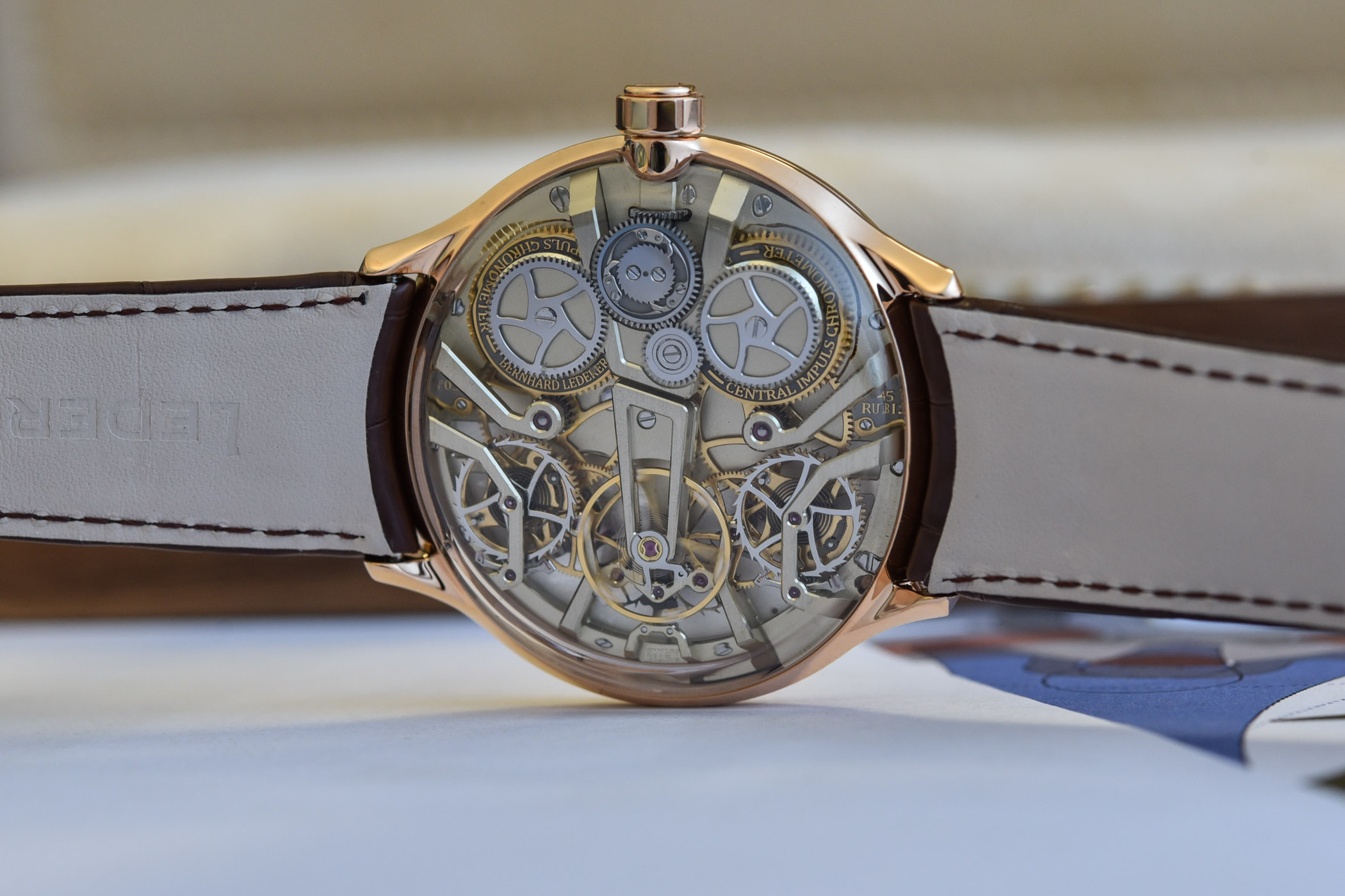
It has been quite a while since we’ve heard from independent German watchmaker, Bernhard Lederer. One of the first members of the AHCI (Académie Horlogère des Créateurs Indépendants), Lederer established a reputation with several disruptive horological concepts. In 2002, he launched the brand BLU (Bernhard Lederer et son Univers). Now based in Saint-Blaise, on the outskirts of Neuchâtel, Bernhard Lederer works behind the scenes for some of the greatest names in the industry. And now, he is back with a series of chronometer watches dubbed “Tribute to the Masters of Escapements”. To kick off this collection, tribute is paid to one of the greatest watchmakers of the 20th century, Georges Daniels. Meet the Bernhard Lederer Central Impulse Chronometer regulated by a natural escapement with two independent gear trains and two remontoirs d’égalité!
The essence of watchmaking
The escapement is one of the most critical parts of a watch, the brain of the movement, or the heart as some might say. It is the device that counts the passage of time. It commands the speed at which energy from the mainspring barrel is released. It works in conjunction with the oscillator, giving impulses to power it. In return, it is regulated by the oscillator. Its role is critical in the quest for the perfect precision, stability and durability of a movement.
Today, the vast majority of watches are fitted with a lever escapement that was invented some 250 years ago by Thomas Mudge. The reason is, in particular, its unparalleled simplicity, which also makes it extremely economical. If it is used by watchmakers for its great reliability, the Swiss lever escapement has a low efficiency, transmitting to the oscillator barely more than a third of the energy it receives from the mainspring. Today, the Omega Co-Axial escapement is the only example of another escapement to have made it to ‘industrial’ production. Nonetheless, the development of new escapements remains one of the most compelling subjects of study for horologists – a crowning glory for the most innovative minds dealing with the very essence of watchmaking and chronometry.
The natural escapement
Among the numerous inventions of the great Breguet, his natural escapement is not the most famous one. Still, Breguet’s fascinating development has inspired many modern watchmakers: George Daniels, Derek Pratt, Laurent Ferrier, Kari Voutilainen, François Paul Journe, Charles Frodsham, Ulysse Nardin with its dual impulse escapement and even Omega with the Coaxial escapement (and George Daniels here again).
In his quest to improve chronometry, Breguet’s idea was to create an escapement incorporating two escape wheels. The escapement is said to be ‘natural’ because the impulses are transmitted as directly as possible from the escapement wheels to the balance wheel. Operating in alternation, and giving two impulses per oscillation, these escapement wheels do not need lubrication. Among the main drawbacks are the inertia and lower efficiency resulting from the additional wheels. Plus, it is not self-starting.
Tribute to George Daniels
With his Central Impulse Chronometer, Bernhard Lederer completed the work of the natural escapement as interpreted by George Daniels. Just like the British master watchmaker, he installed the two escapement wheels at the end of two separate gear trains, each with its own barrel.
With this arrangement, no direct connection mechanism is needed between these apart from the anchor/oscillator, naturally. It also aims at avoiding that the outer escapement wheel is without force when the inner wheel is in contact with the anchor. The escapement itself is, therefore, less complex, more efficient and there is no play between the escape wheels. Lederer added on each of these independent gear trains a 10-second constant force remontoire (Gafner type). These aim at maintaining chronometric precision equalizing the torque variations in whatever the state of wind.
Above: (1) Daniels’ escapement with a ‘traditional’ triangular central lever stone (2) Lederer’s escapement with an optimized concave-cut stone that aims at advancing the moment of contact between the escapement wheel tooth and the balance wheel impulse pallet (take a closer look at the centre stone to spot the difference).
In the context of a wristwatch, the frequency has been increased to 3Hz (vs. 2Hz for the Daniels escapement). With the remontoires d’égalité, the power reserve is of 38 hours. The escapement parts and their geometry have been optimized, paring down the weight of energy-intensive components and reducing the internal friction of the escapement to a minimum. For instance, the escapement wheels and anchor are fashioned out of titanium. Lighter, stiffer and with lower inertia, they are quick to restart and more energy efficient. The points of contact between the components and their shape have been optimized too. In particular, Bernhard Lederer underlines the importance of a small ruby with a concave cut in the centre, which advances the moment of contact between the escapement wheel tooth and the balance wheel impulse pallet.
This fascinating mechanical concept ticks at the heart of an elegant round three-hander, presented in two different versions. The pink gold version is more understated. Its opaline dial features applied hour markers with luminescent material that are paired with leaf-shaped hands. The small seconds display at 8 o’clock is slightly recessed and snailed. The white gold version is more technical with its openworked slate-grey dial that unveils parts of the escapement and the remontoires.
The case stands out with its large opening and thin bezel. On the wrist, it wears slightly smaller than the 44mm would suggest because of the short lugs. Turning the watch over, the domed sapphire caseback provides an impressive view of the movement. Its symmetrical construction is enhanced by architectural bridges. The surfaces alternate between matte and mirror polished, enhancing the perception of depth. Last, the motion of the escapement and of the two remontoirs – every five seconds in alternation – is truly mesmerizing.
Price and availability
The Bernhard Lederer Central Impulse Chronometer is released in two limited editions of 50 watches each. It is worn on a brown or black alligator leather strap with a gold pin buckle. Price is set at CHF 128,000.
For more information, please visit www.bernhard-lederer.com.

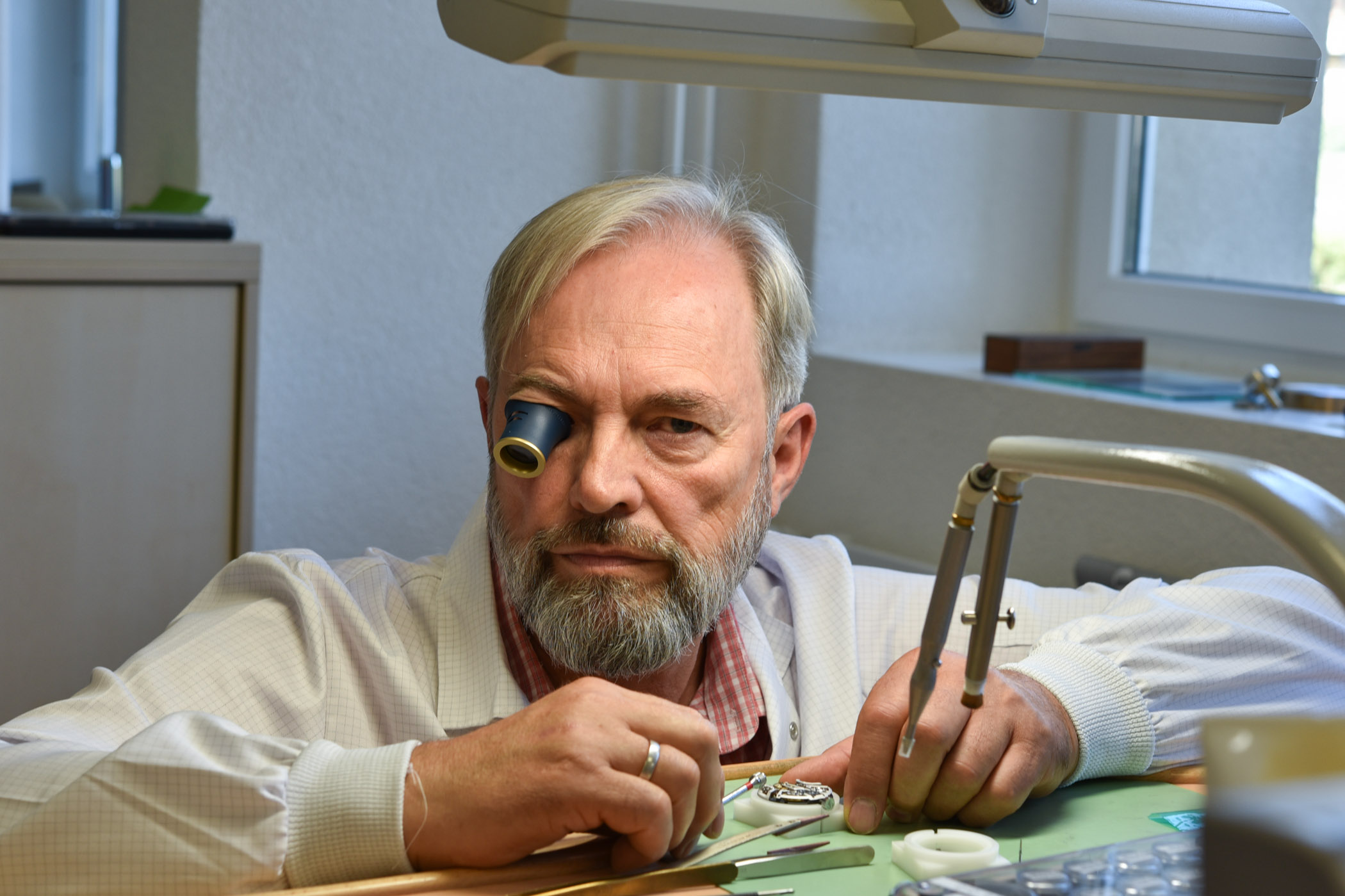
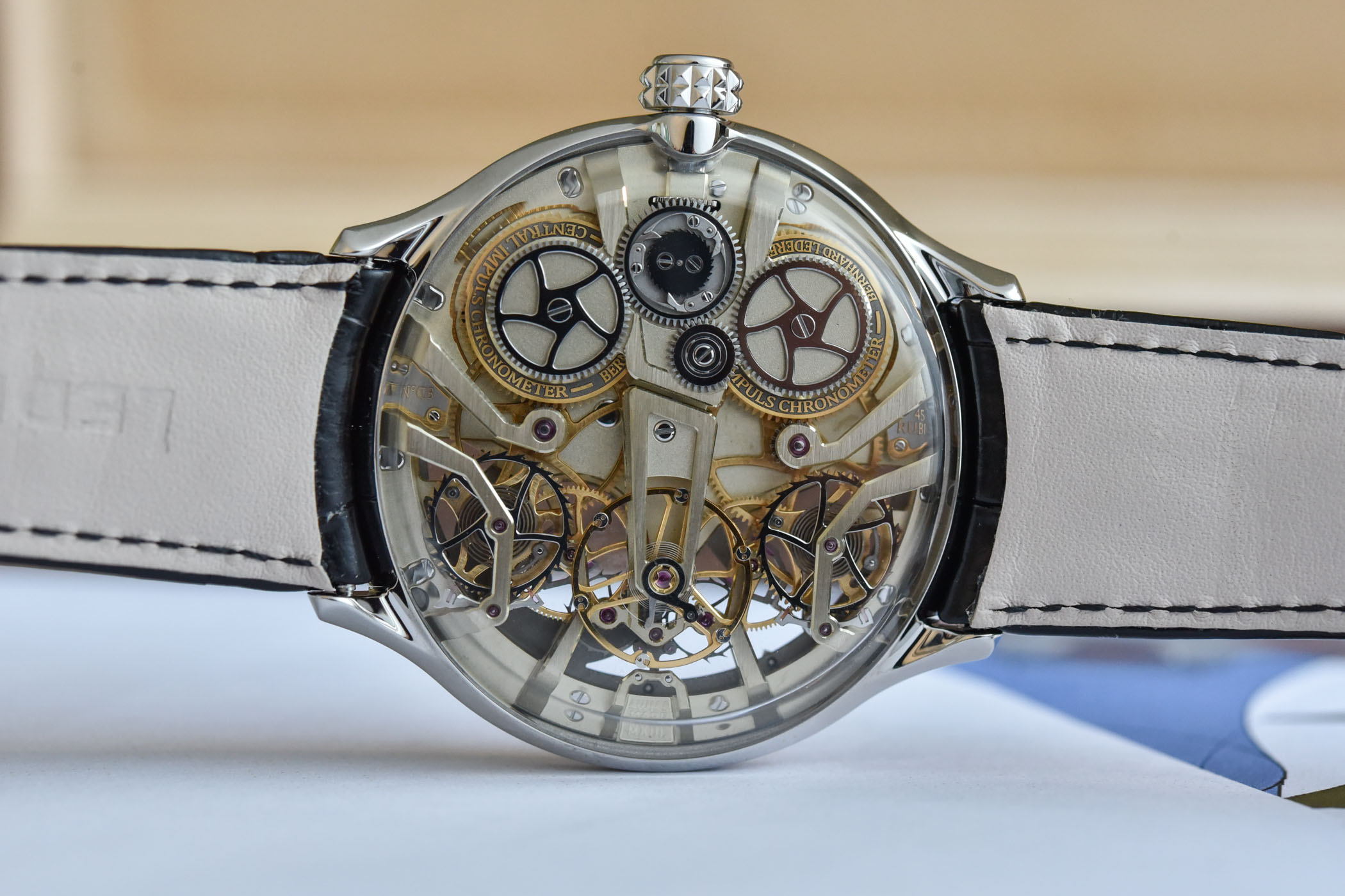
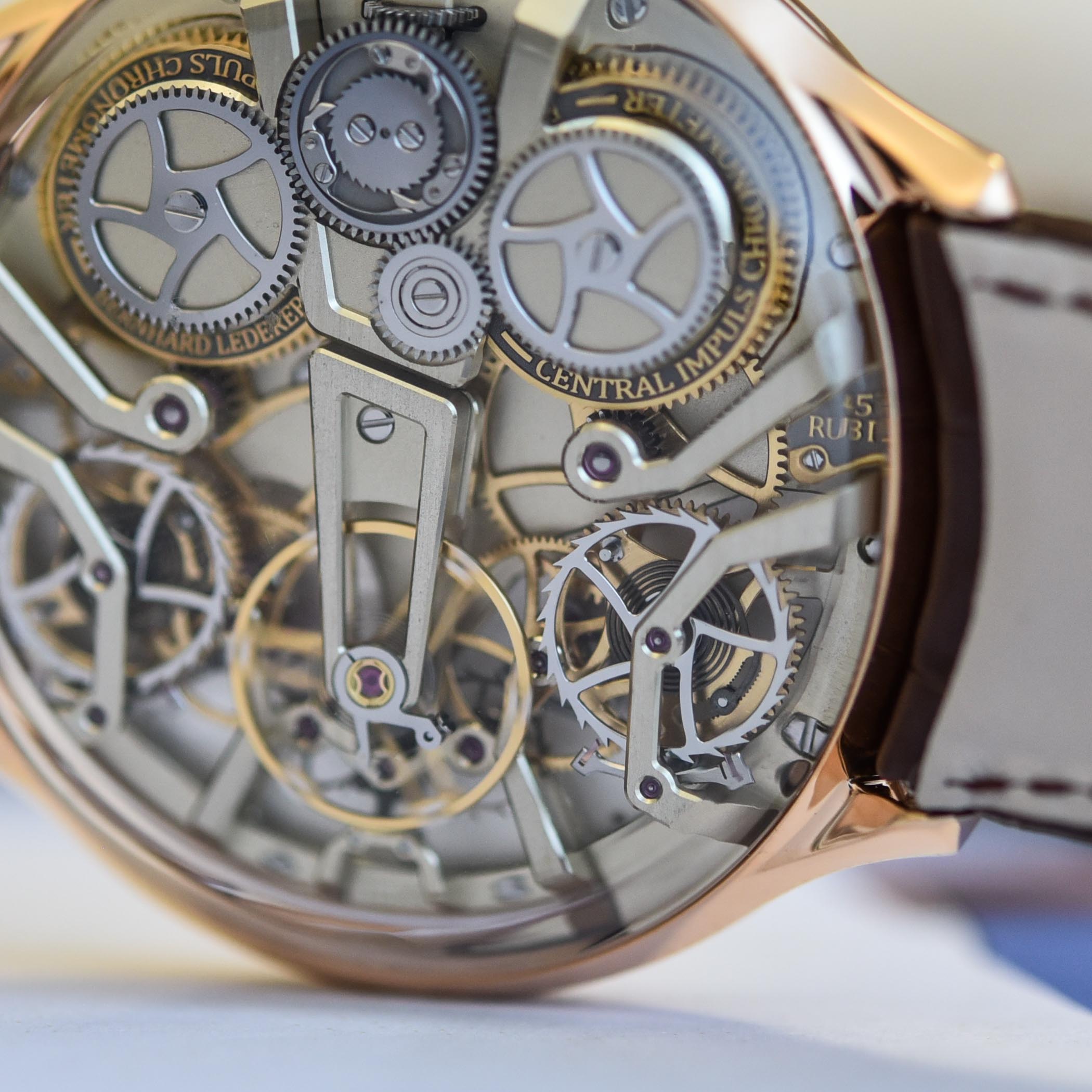
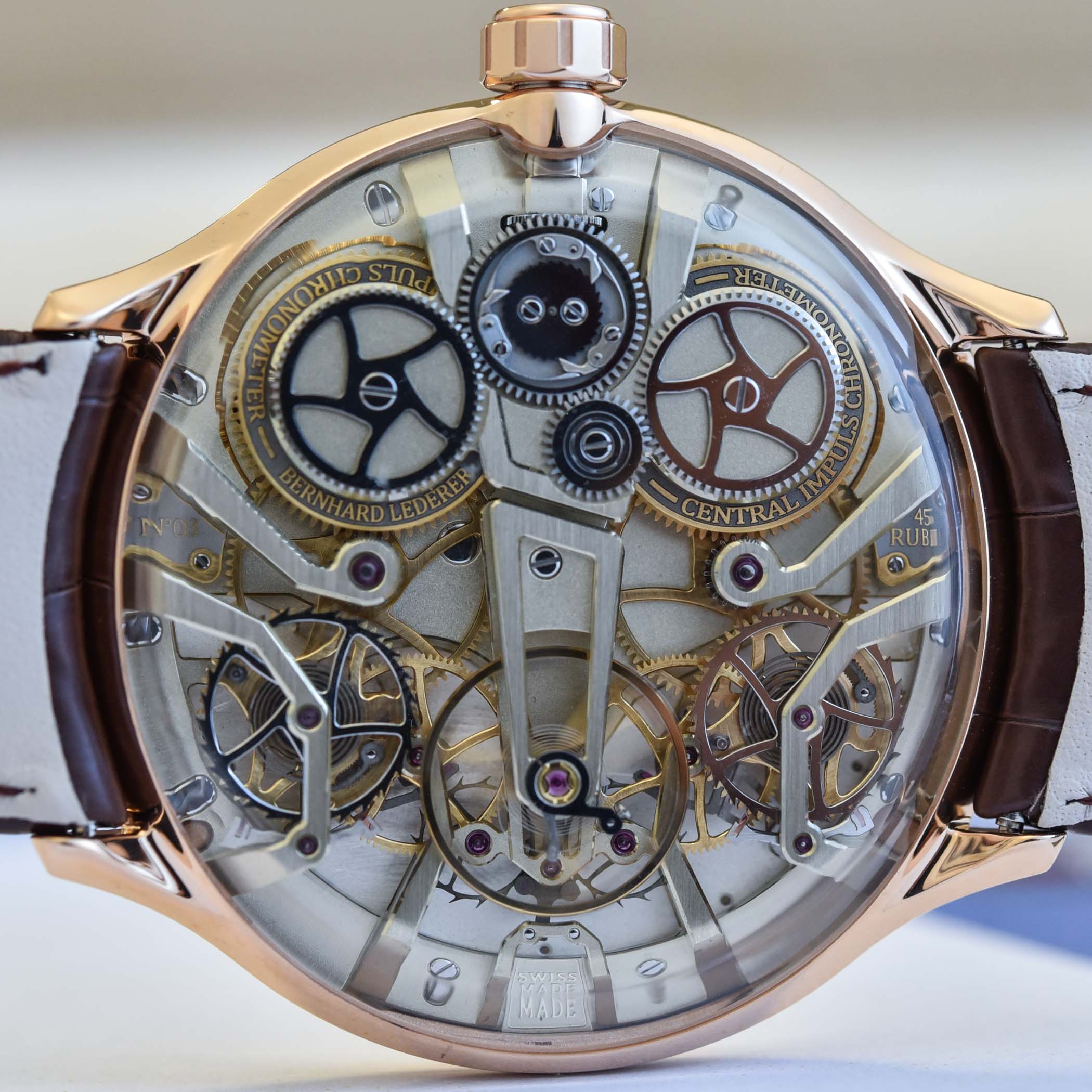
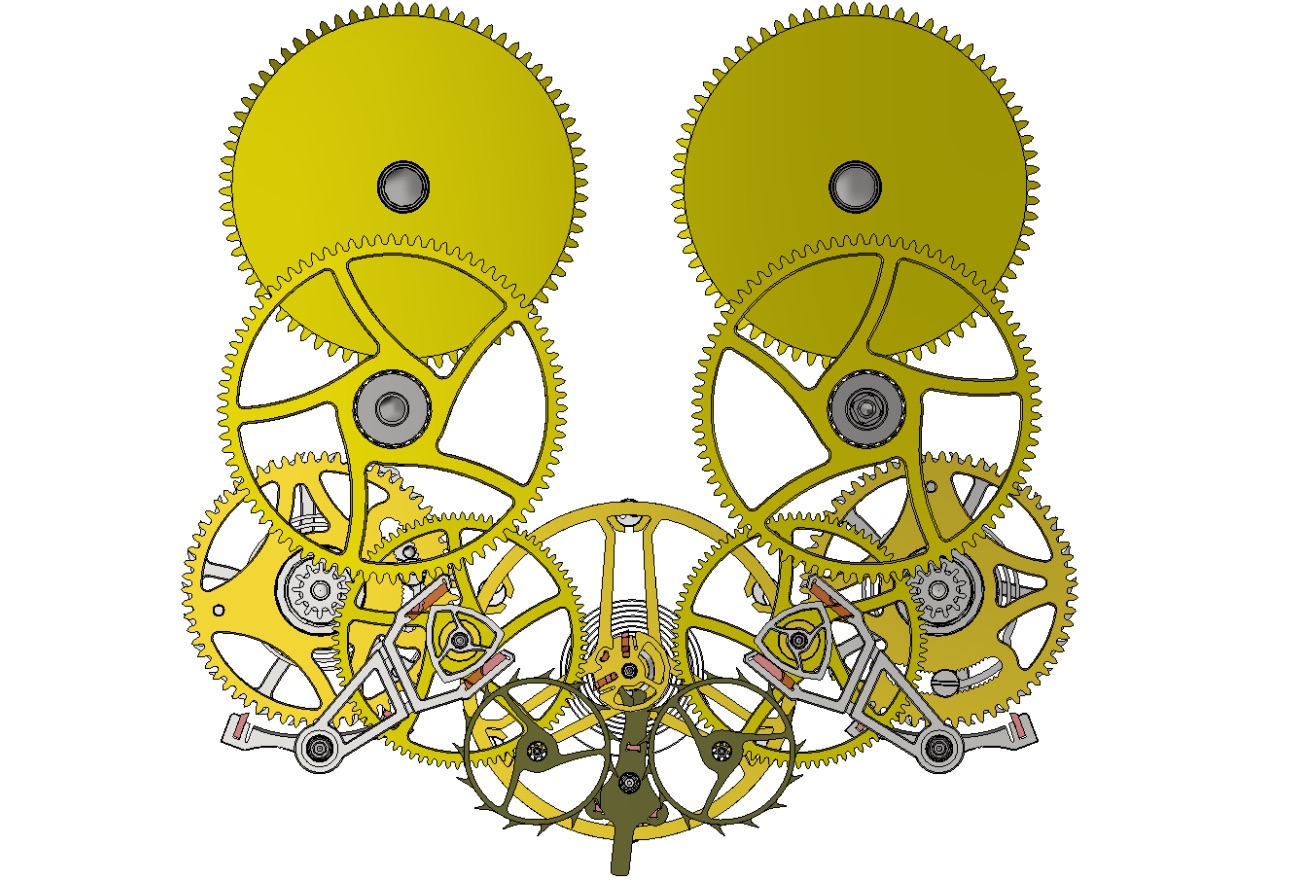
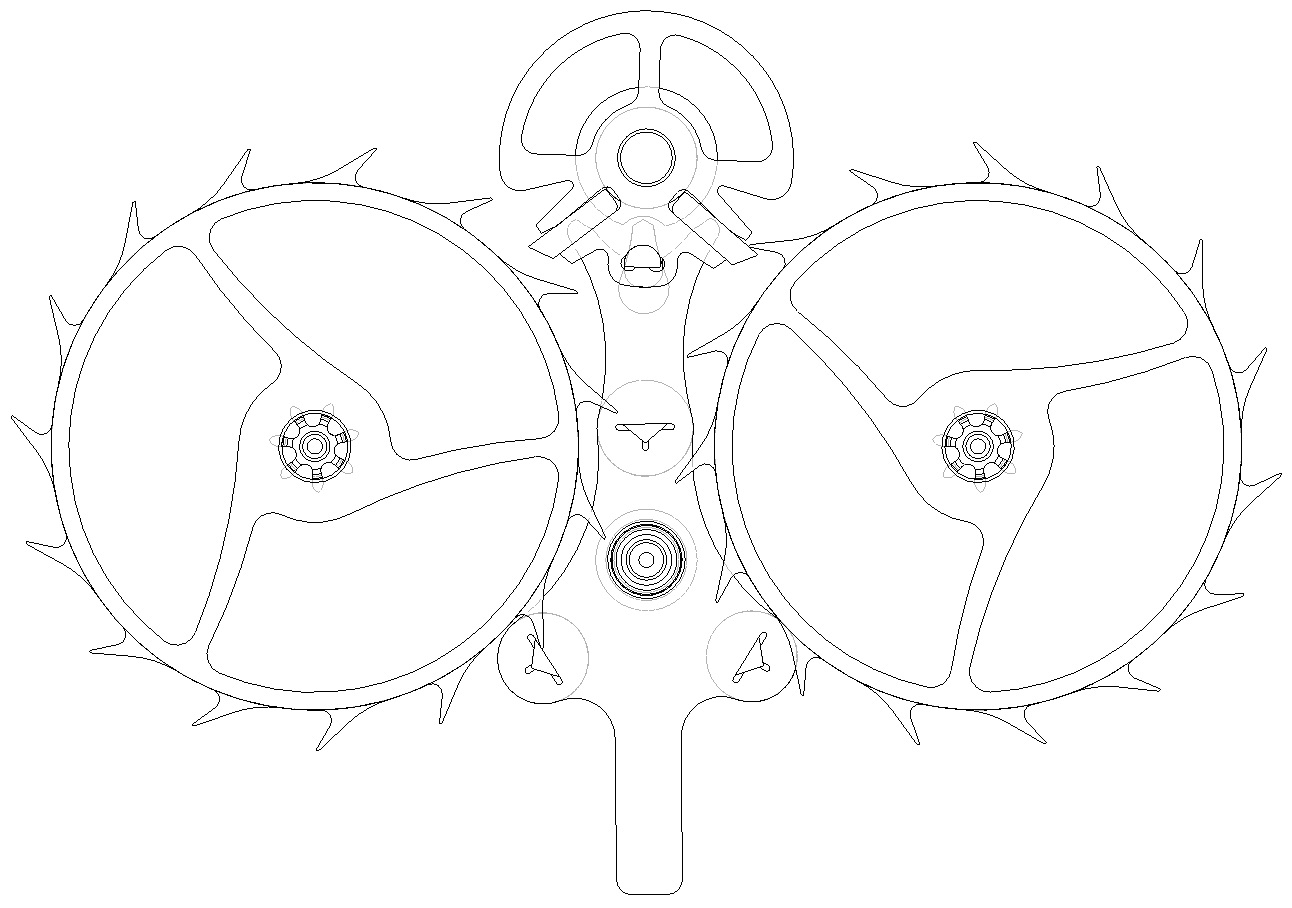
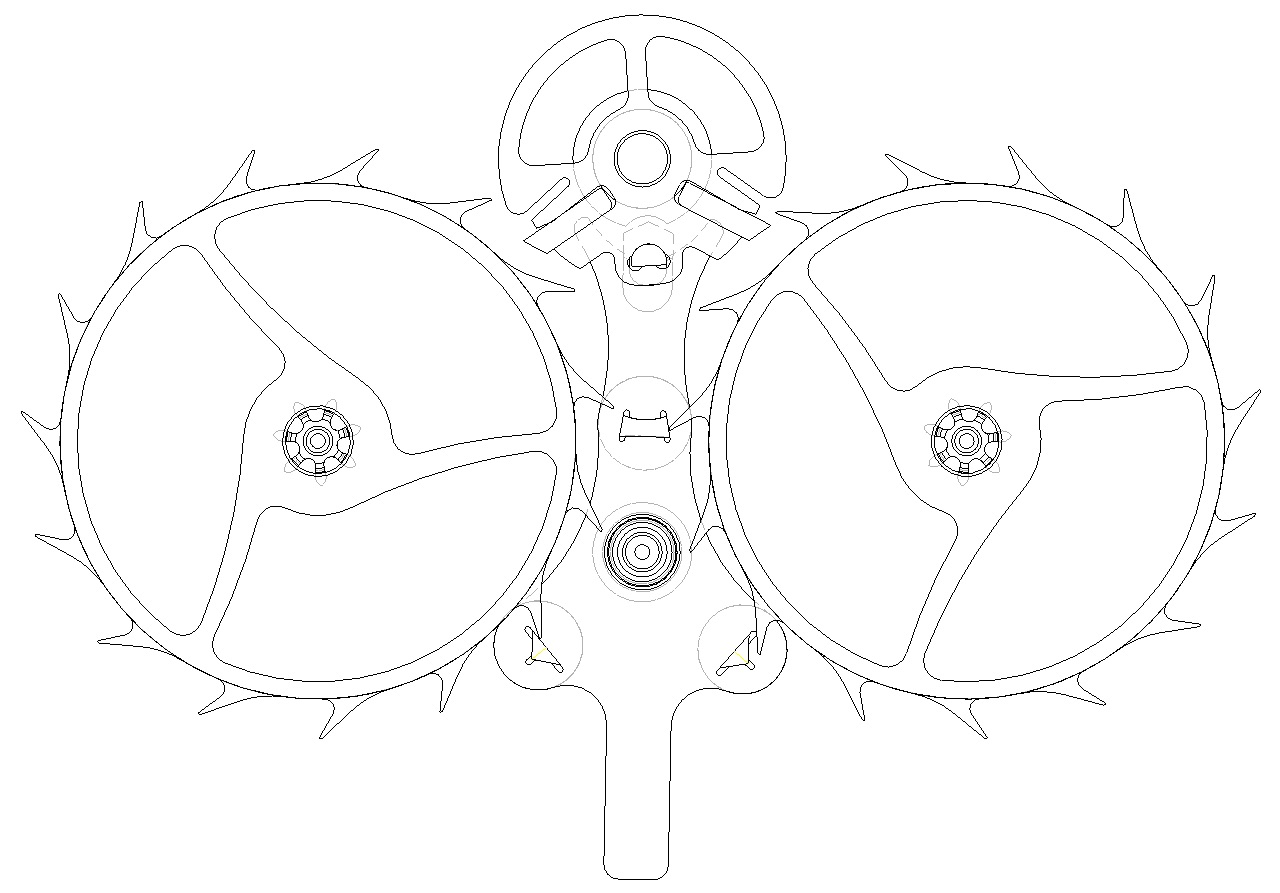
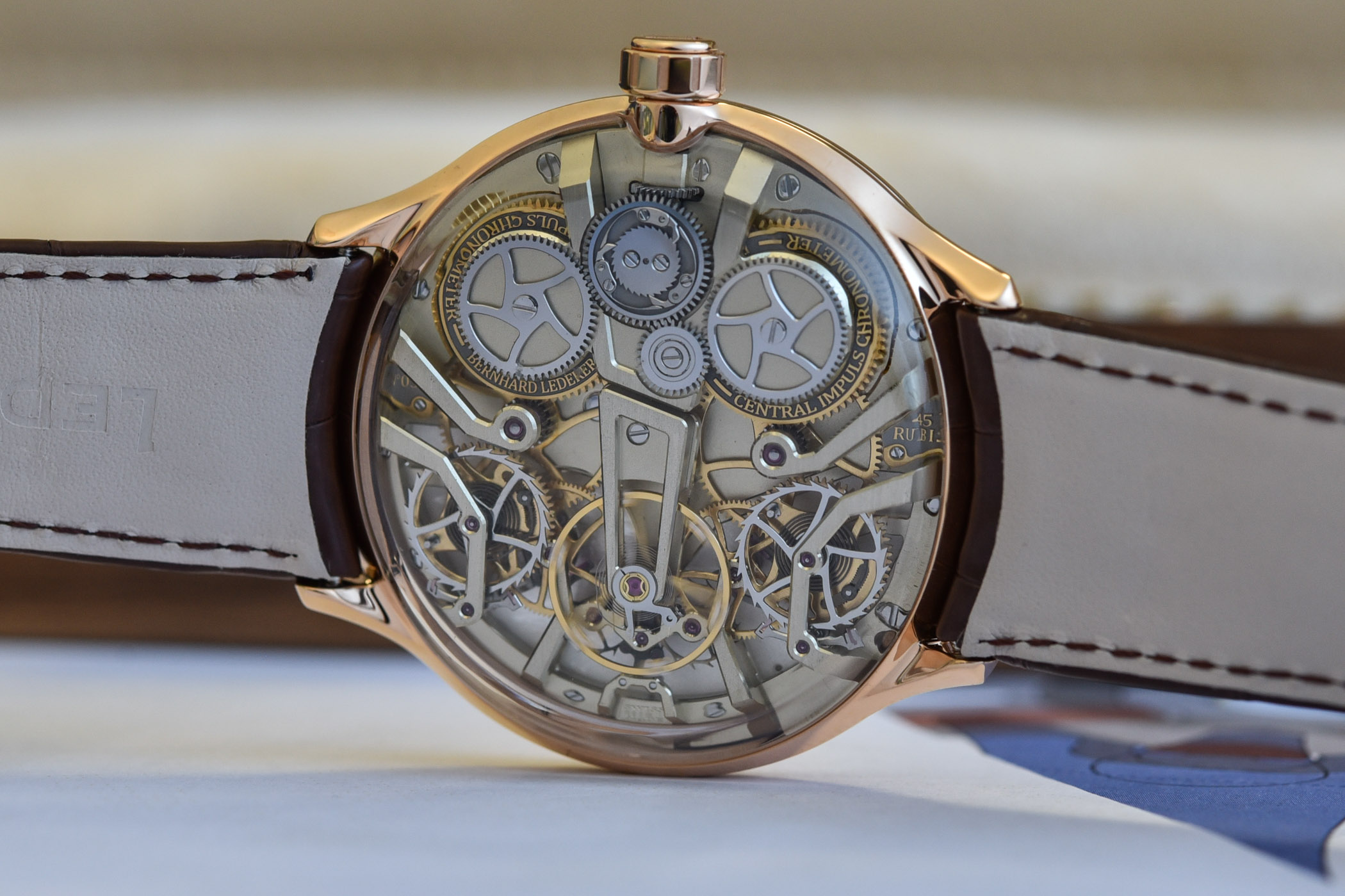
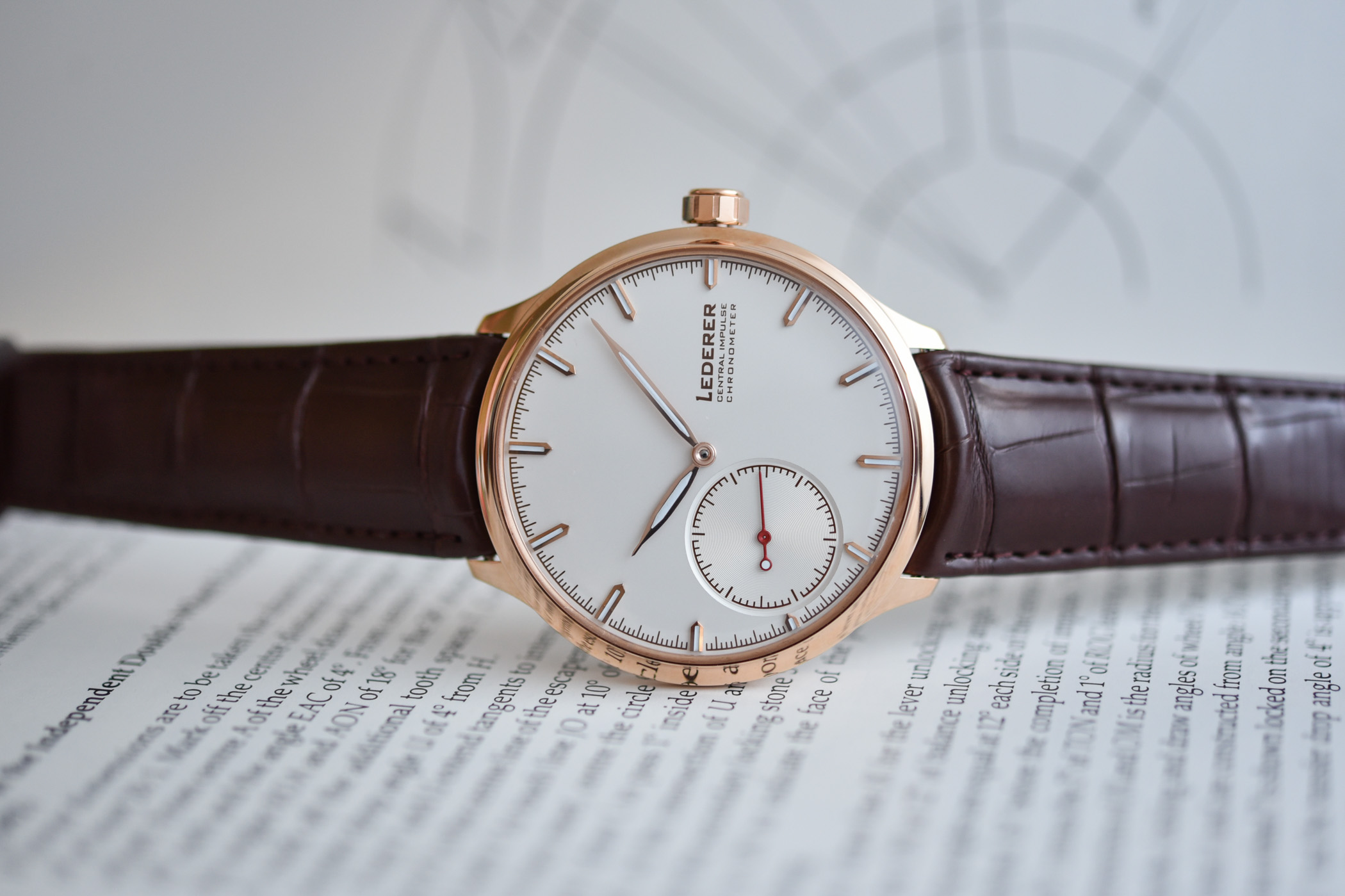
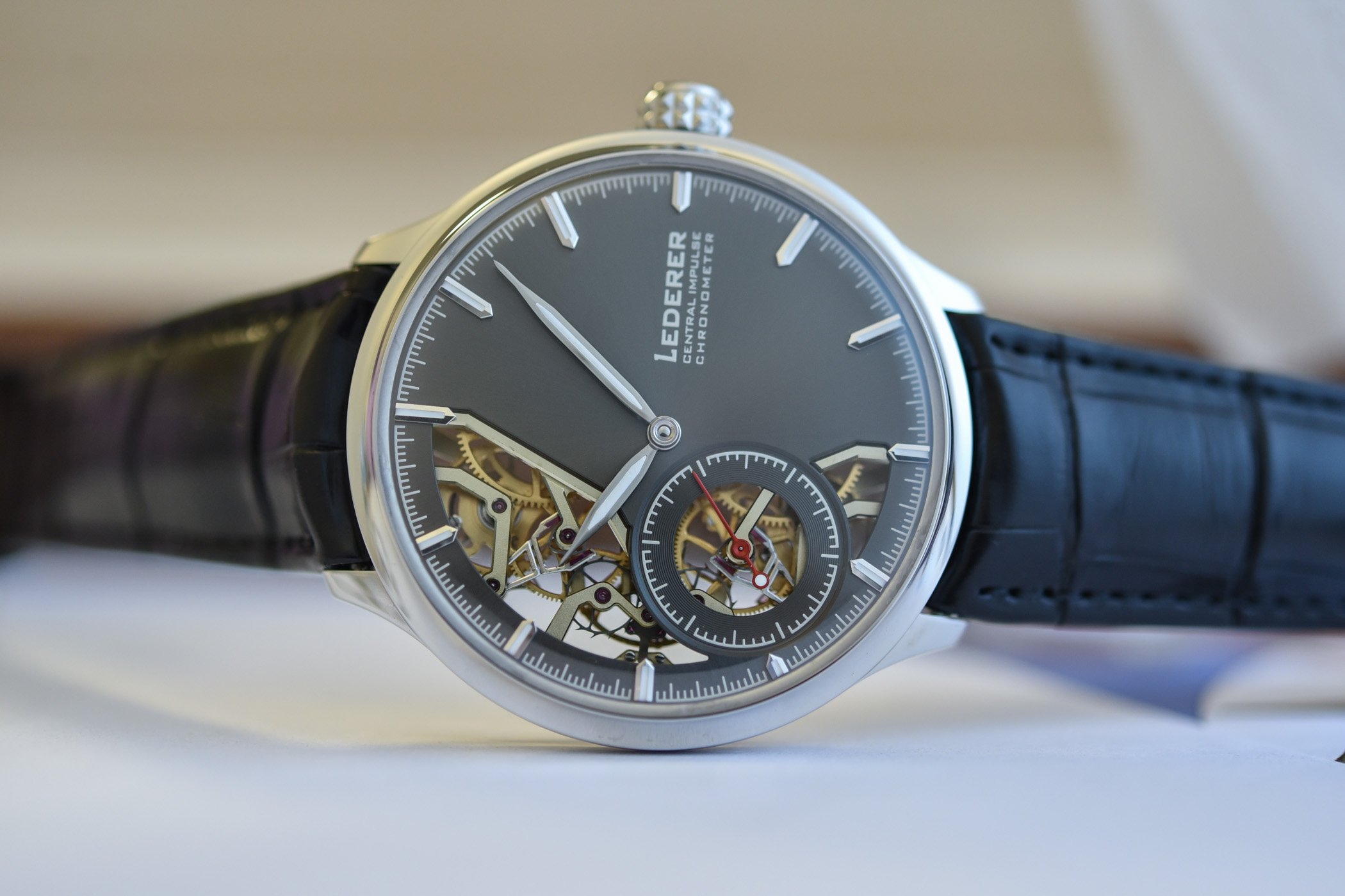
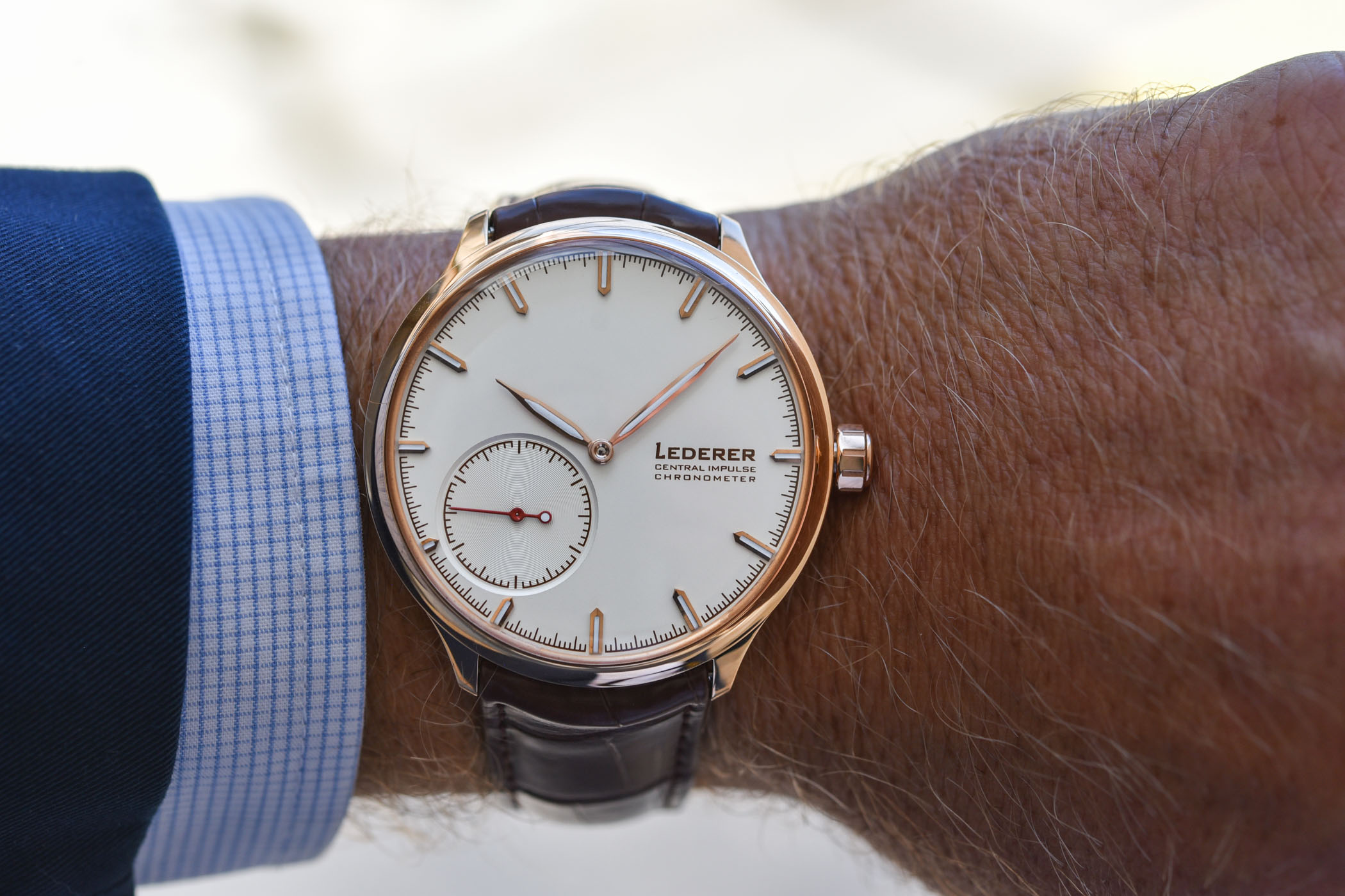
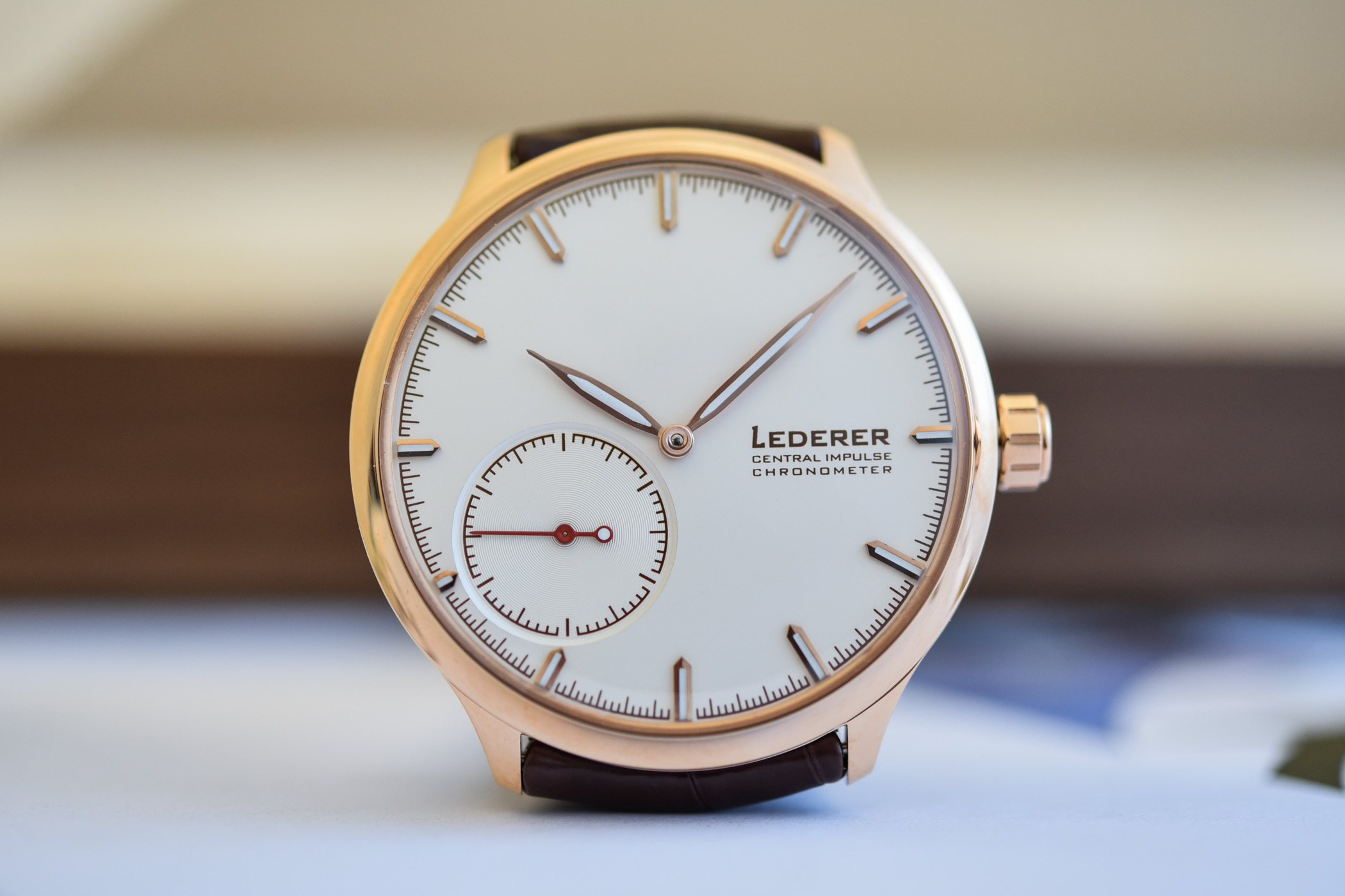
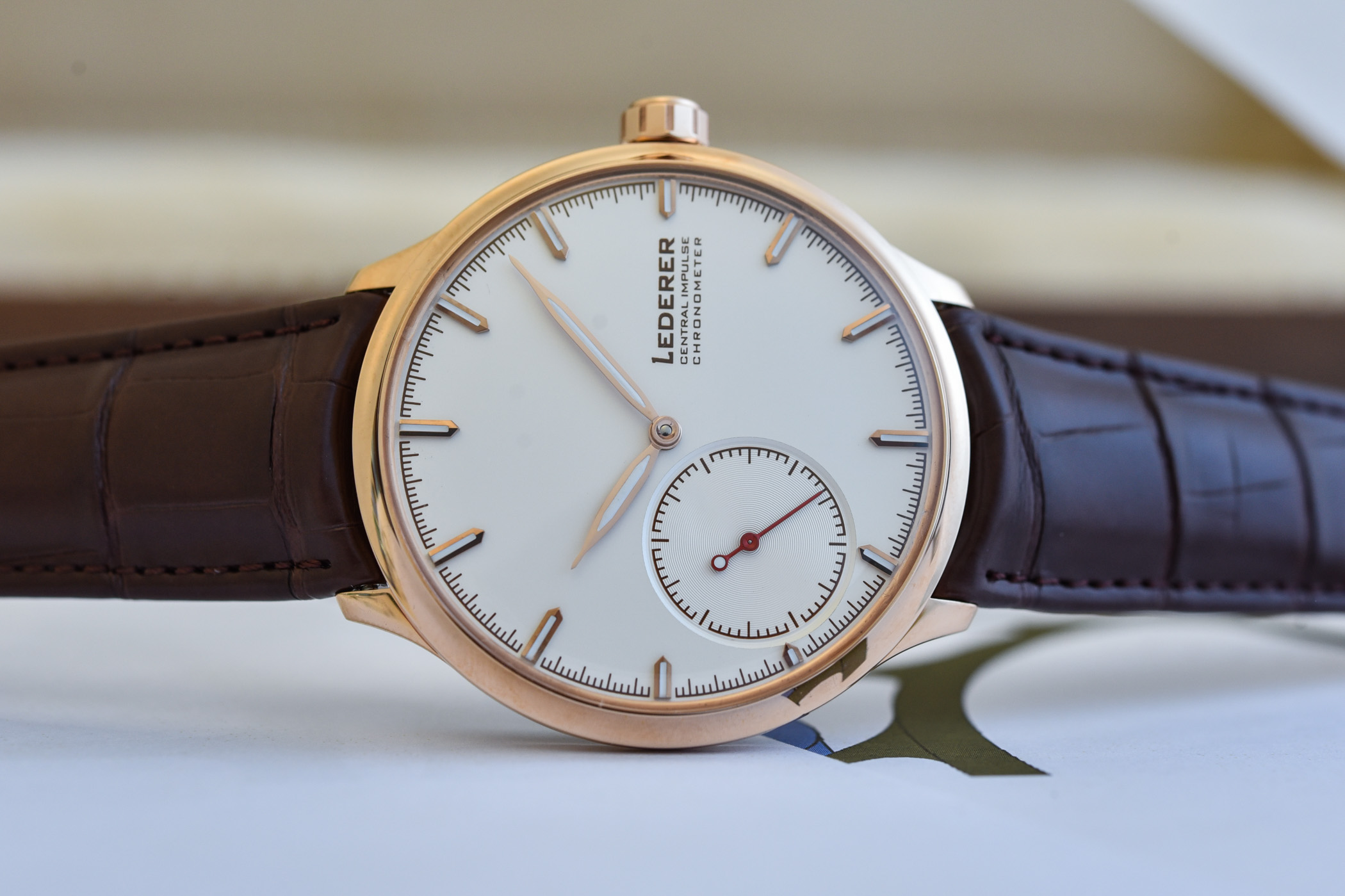



9 responses
Wow. Just wow.
I couldn’t concentrate on all that technical stuff because of the way his eyelid is wrapped around the edge of that loupe.
I have never seen a movement cover the case back so completely! One of the watches of the year if not the decade!!
… amazing. Not very often an article leaves me gobsmacked at the horology behind it. It’s most aesthetics these days. But Lederer has created a technical marvel, AND it doesn’t look like a tech demo. Probably the only uber-expensive watch I’ve seen in 10 years that I think is worth the asking price.
LEDERER Central Impulse Chronometre…What an awful logo…
Impressive movement and development!
Pretty impressive piece of engineering. It would be interesting to know how accurate this added complexity makes the finished watch compared to an ordinary chronometer .
Gav – Funny! I had to put my loop in and go look in the mirror. If I could create something like this watch I wouldn’t really care. Still trying to wrap my brain around the mechanics.
Well… Technically they could’ve make it a dual-time watch isn’t it? Or, a chronograph with its own movement as the watch only uses one of the mainspring and gears set while the other one purpose is just to make the other (usually driven) escape wheel doesn’t drag down the power of the other mainspring.
Btw, does the second hand ticks?